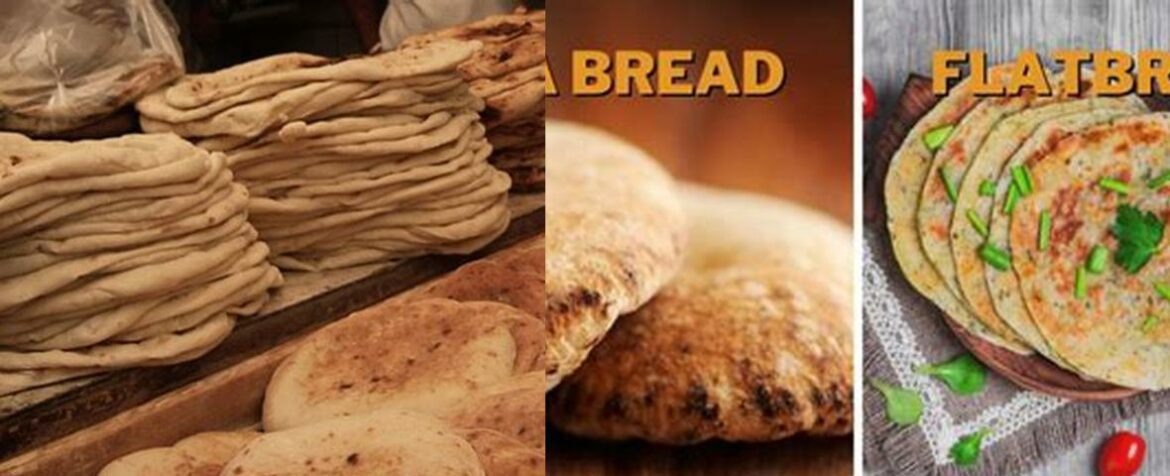Are you ready to embark on a delicious journey that will unravel the mysteries of flatbread and pita bread? Well, you’re in for a treat! In this blog post, we will dive deep into the world of these two beloved breads and discover their unique differences, surprising similarities, and mouthwatering culinary applications. So, whether you’re a bread enthusiast or simply curious about expanding your culinary repertoire, get ready to satisfy your hunger for knowledge and flavor. Let’s get this dough rolling!
Flatbread vs Pita Bread: Unveiling the Differences, Similarities, and Culinary Applications
Embark on a culinary journey as we delve into the delectable world of flatbread and pita bread, two beloved flatbreads with distinct characteristics and diverse culinary applications. From their historical origins to their unique textures and flavors, this comprehensive guide will uncover the nuances that set these two flatbreads apart.
Origins and Cultural Significance
Flatbreads, in their simplest form, have been a staple food across civilizations for millennia. With humble beginnings in ancient Egypt, Greece, and India, flatbreads have evolved into a diverse array of regional specialties, each reflecting the culinary heritage and traditions of its birthplace.
Pita bread, on the other hand, traces its roots to the Middle East, where it has been a cornerstone of cuisine for centuries. Its unique pocket, created by steam during baking, has made it a versatile choice for wraps, sandwiches, and dips, earning it widespread popularity throughout the Mediterranean and beyond.
Ingredients and Preparation Methods
Simplicity lies at the heart of both flatbread and pita bread. Their basic ingredients—flour, water, and salt—are transformed into culinary delights through the skilled hands of bakers. Flatbreads, in their classic form, are unleavened, meaning they do not use yeast to rise, resulting in a dense yet pliable texture.
Pita bread, while also unleavened, often incorporates yeast into its recipe, resulting in a lighter and airier texture. The addition of milk, yogurt, and eggs can further enhance the flavor and texture of pita bread, creating variations that cater to different tastes and preferences.
The baking process also distinguishes these two flatbreads. Flatbreads are typically cooked on a hot surface, such as a griddle or pan, imparting a characteristic char and smoky flavor. Pita bread, on the other hand, is baked in an oven, allowing it to puff up and create the signature pocket that is its defining feature.
Culinary Applications and Regional Variations
The versatility of flatbread and pita bread extends far beyond their basic ingredients and preparation methods. In India, flatbreads like roti, naan, and paratha are integral components of traditional meals, often serving as a base for curries, vegetables, and meats.
In Mexico, tortillas, another type of flatbread, are the foundation of tacos, burritos, and quesadillas, showcasing the diverse fillings and flavors of Mexican cuisine. Greek flatbreads like pita and lagana are popular accompaniments to grilled meats, salads, and dips, adding a delightful layer of texture and flavor to the meal.
Pita bread, with its unique pocket, excels in the realm of sandwiches and wraps. Its ability to hold fillings securely makes it an ideal choice for falafel, hummus, and grilled meats, creating a portable and satisfying meal. In Mediterranean cuisine, pita bread is often served alongside dips like tzatziki, baba ganoush, and hummus, providing a delightful contrast of flavors and textures.
Conclusion: A Culinary Symphony of Flatbreads
Flatbread and pita bread, while sharing common roots and basic ingredients, have carved out distinct identities in the culinary world. Their unique textures, flavors, and culinary applications make them beloved staples in cuisines around the globe. Whether you prefer the simplicity of a classic flatbread or the versatility of pita bread, these flatbreads offer a delectable gateway into the rich tapestry of global cuisine.
FAQ about Flatbread Vs Pita Bread
Q: What is the main difference between flatbread and pita bread?
A: The main difference lies in their texture. Flatbread is dense and pliable, while pita bread is lighter and airier.
Q: Which bread is better for sandwiches and wraps?
A: Pita bread is better for sandwiches and wraps due to its unique pocket that securely holds fillings.
Q: What are some popular fillings for pita bread?
A: Pita bread is commonly filled with falafel, hummus, and grilled meats, creating a portable and satisfying meal.
Q: How is pita bread traditionally served in Mediterranean cuisine?
A: Pita bread is often served alongside dips like tzatziki, baba ganoush, and hummus, providing a delightful contrast of flavors and textures.
Q: Are flatbread and pita bread both unleavened?
A: Yes, both flatbread and pita bread are unleavened, meaning they do not use yeast to rise.
Q: Can pita bread have variations in its recipe?
A: Yes, pita bread can incorporate ingredients like milk, yogurt, and eggs to enhance its flavor and texture, creating variations that cater to different tastes and preferences.


